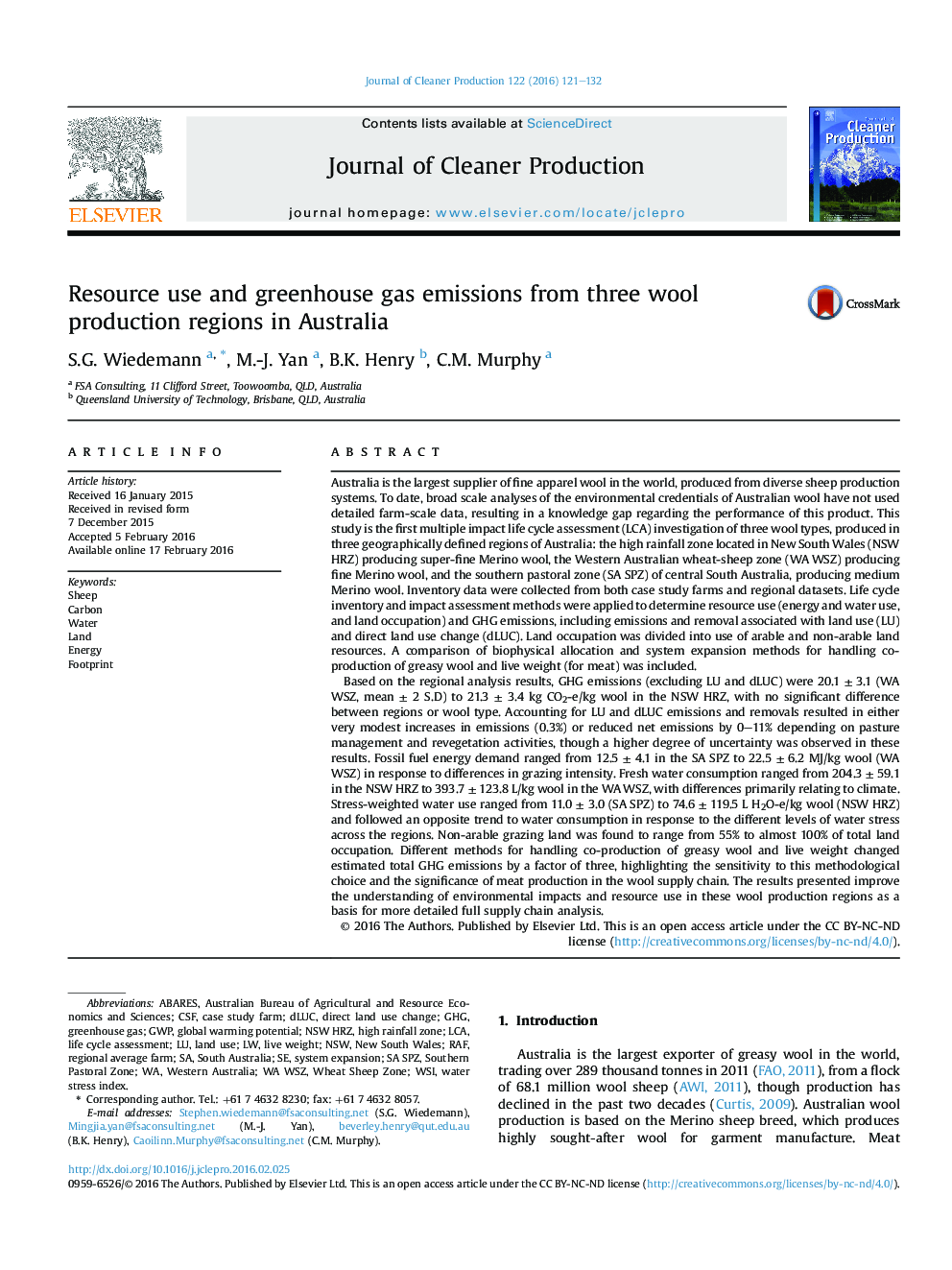| Article ID | Journal | Published Year | Pages | File Type |
|---|---|---|---|---|
| 8102389 | Journal of Cleaner Production | 2016 | 12 Pages |
Abstract
Based on the regional analysis results, GHG emissions (excluding LU and dLUC) were 20.1 ± 3.1 (WA WSZ, mean ± 2 S.D) to 21.3 ± 3.4 kg CO2-e/kg wool in the NSW HRZ, with no significant difference between regions or wool type. Accounting for LU and dLUC emissions and removals resulted in either very modest increases in emissions (0.3%) or reduced net emissions by 0-11% depending on pasture management and revegetation activities, though a higher degree of uncertainty was observed in these results. Fossil fuel energy demand ranged from 12.5 ± 4.1 in the SA SPZ to 22.5 ± 6.2 MJ/kg wool (WA WSZ) in response to differences in grazing intensity. Fresh water consumption ranged from 204.3 ± 59.1 in the NSW HRZ to 393.7 ± 123.8 L/kg wool in the WA WSZ, with differences primarily relating to climate. Stress-weighted water use ranged from 11.0 ± 3.0 (SA SPZ) to 74.6 ± 119.5 L H2O-e/kg wool (NSW HRZ) and followed an opposite trend to water consumption in response to the different levels of water stress across the regions. Non-arable grazing land was found to range from 55% to almost 100% of total land occupation. Different methods for handling co-production of greasy wool and live weight changed estimated total GHG emissions by a factor of three, highlighting the sensitivity to this methodological choice and the significance of meat production in the wool supply chain. The results presented improve the understanding of environmental impacts and resource use in these wool production regions as a basis for more detailed full supply chain analysis.
Keywords
Related Topics
Physical Sciences and Engineering
Energy
Renewable Energy, Sustainability and the Environment
Authors
S.G. Wiedemann, M.-J. Yan, B.K. Henry, C.M. Murphy,
